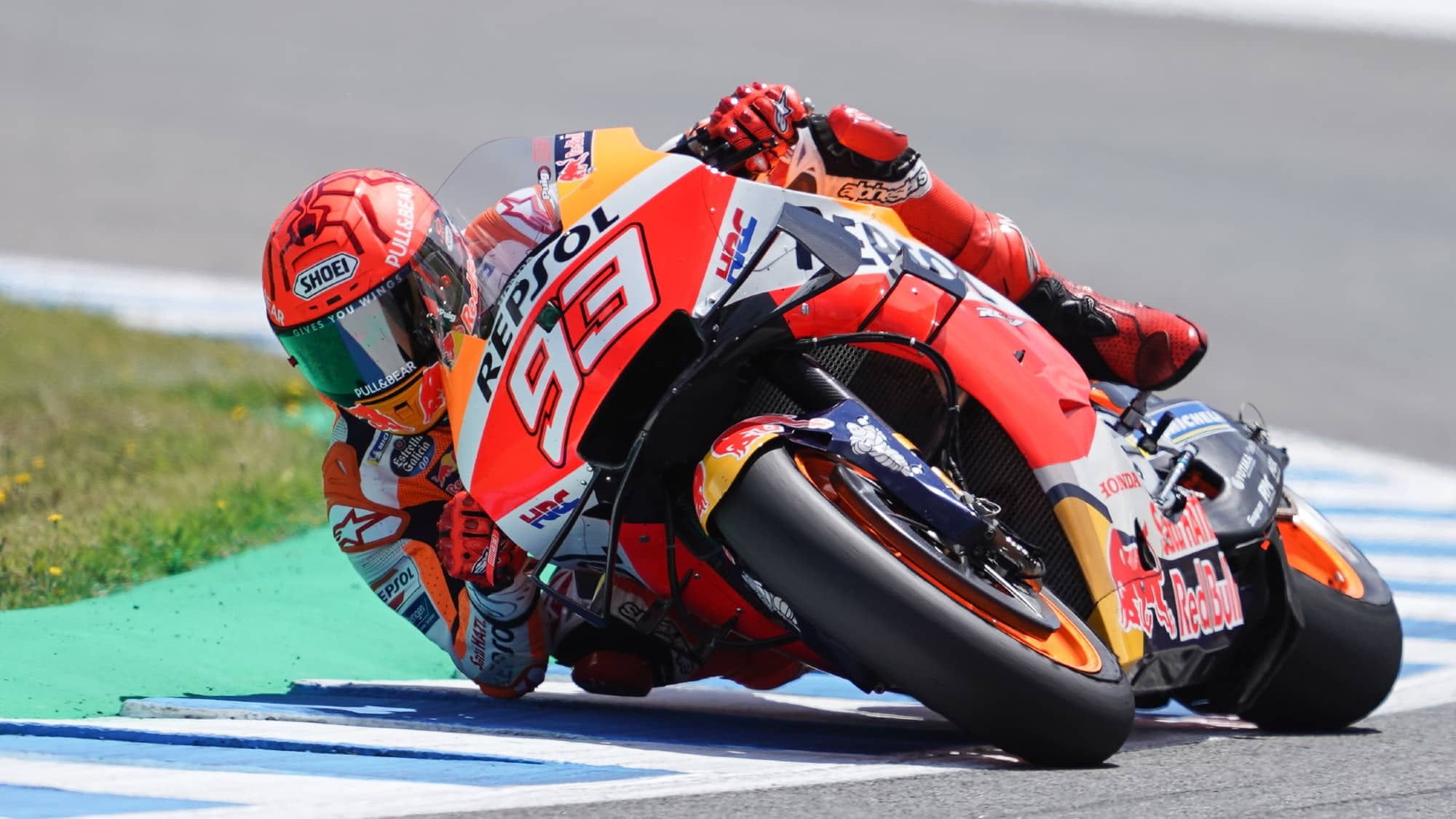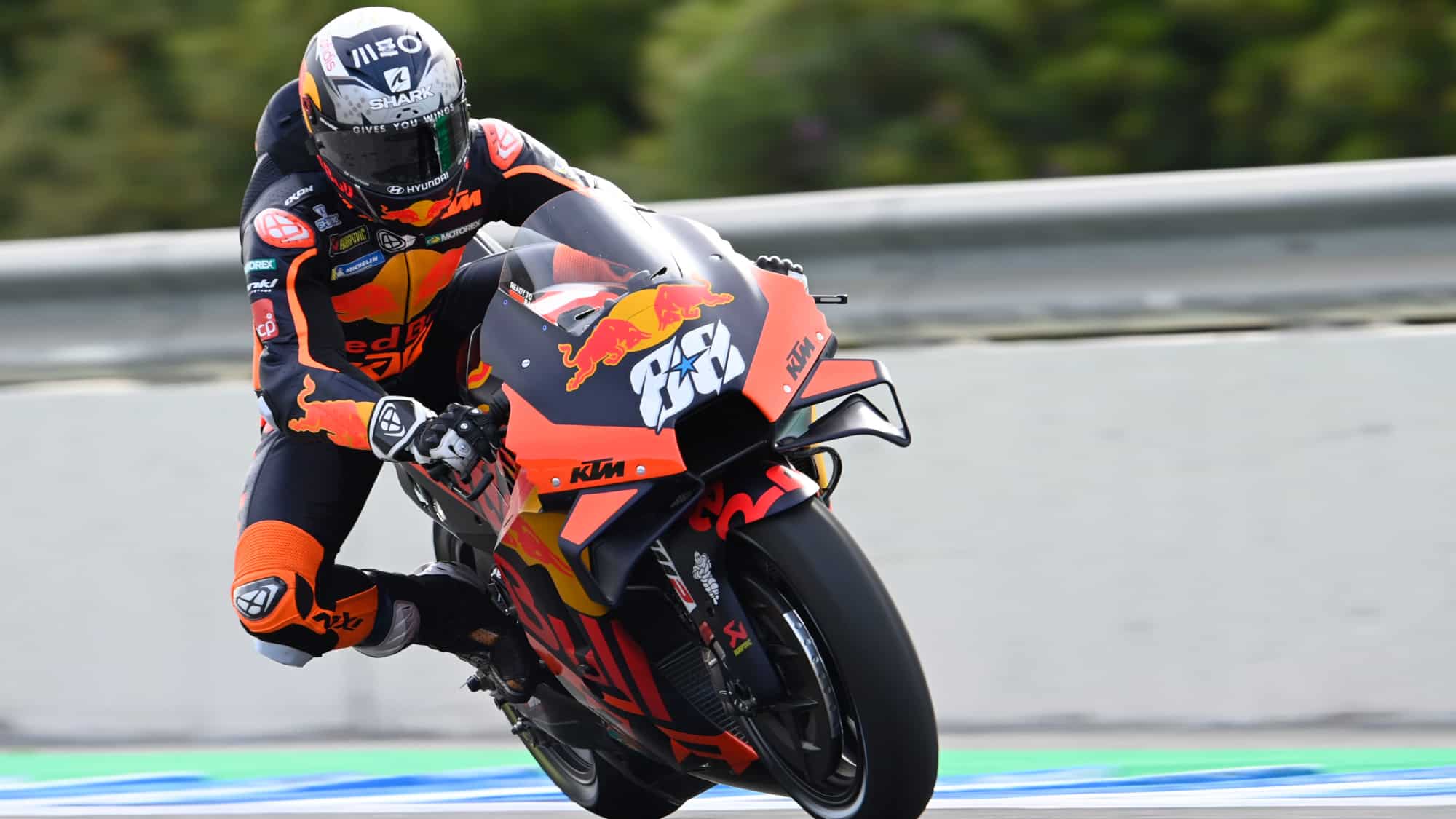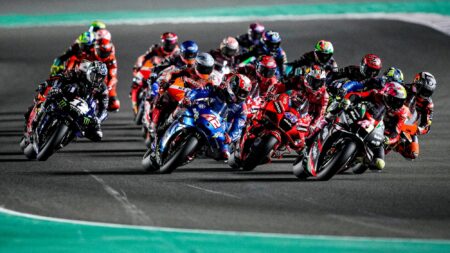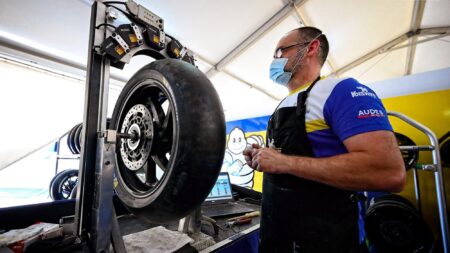KTM, Honda and Suzuki are very unhappy about the situation, but they know this is the reality of spec-tyre racing – some tyres you win, some tyres you lose.
Of course, sometimes when conditions are just right the symmetric fronts can work for RC213V, RC16 and GSX-RR riders. It’s easy to see when this happens
Takaaki Nakagami had his best race of the year last week at Jerez. Yes, Nakagami ran his 2019 chassis instead of the 2021 iteration he had used at the first three races, but the fact that the medium symmetric front worked for him was at least as important to his Jerez result.
Because there is little chance of the 2021 allocation being changed all three factories are working hard to adapt their machines to the current reality.
This means adjusting wheelbase, bike balance, centre of gravity and so on in an effort to work with the symmetric tyres.
KTM’s travails have been talked about the most. The Austrian manufacturer’s engineers are working to get the softer symmetric front to work with the RC16, for those races where they can’t use the harder tyre.
The problem for the RC16 and also the RC213V is that the soft deflects (squishes) too much during braking, so then the bike won’t turn. The aim therefore is to take some load off the front.

Champion Joan Mir was very fast at the end of 2020, but is struggling to make the podium this year
Suzuki
This is always what happens with spec tyres – engineers have to adapt their bikes to work with the tyres. The biggest change happened in 2016 when MotoGP changed from Bridgestone. Over the next season or so the balance of MotoGP bikes completely changed, from front bias to take advantage of Bridgestone’s better front tyre, to rear bias to use Michelin’s better rear tyre.
So ultimately what Honda and KTM need to do is redesign their bikes.
In fact Honda tried doing this some years ago, when they tried to make the RC213V into more of a corner-speed bike to suit the silky-smooth style of Dani Pedrosa. What HRC engineers found was that by trying to make the RC213V carry more corner speed they lost the bike’s stop-and-go advantages without gaining enough corner speed to compensate.
In other words, each bike has its own character and messing too much with that character isn’t usually a good idea.




